
Don Ataman Regiment
One of the elite regiments of the Don Host, descended from one of the Imperial Guard units.
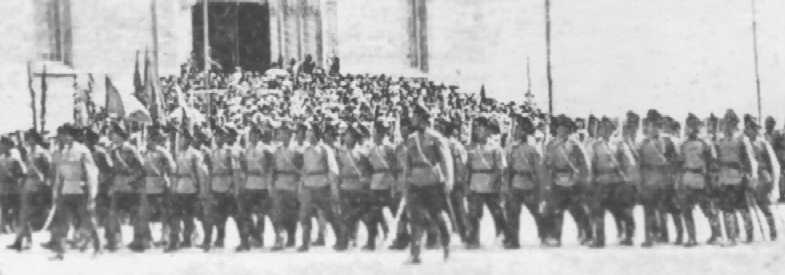
Parade of Dismounted Sotnia of Ataman Regiment in 1918 (Photoalbum)
Life Guard Ataman Regiment of the Don Host
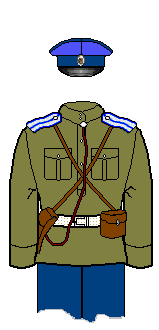 |
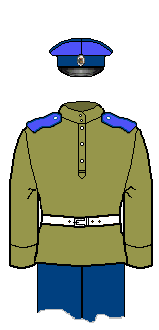 |
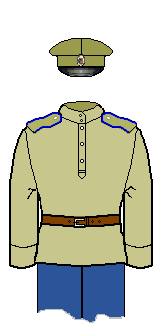 |
| Officer | Trooper | Field dress |
This uniform is based on the service dress of the Imperial unit. (The parade uniform had a blue coat.)
As a guard unit, it did not follow the usual Don colour scheme. Instead all its shoulderboards and cap colours were mid-blue.
The trousers were apparently unstriped. Dress belts of guards were white.
WWI field dress would have caps and shoulderboards replaced by khaki, but some coloured parts might well be retained in practice. Williamson reports seeing the Ataman Regiment at the front in the full coloured caps.
Uniform Details
 |
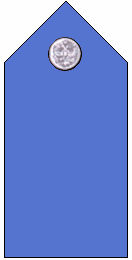 |
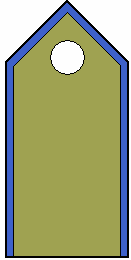 |
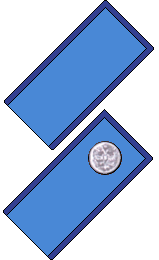 |
| Shoulderboards: Sotnik (Lieutenant) | Shoulderboards: Kazak (Trooper) | Shoulderboards: trooper field version | Collar tabs |
Shoulderboards were surprisingly plain. Button and officer lace were silver, so officer rank markings would be in gold.
There was a dressy pre-war papakha, with large blue "bag" and white plume. If they wore a papakha in the Civil War they were normal ones, perhaps with mid-blue cloth inside and silver cross for officers.
History in the RCW
When the Don Host started to form its own army, straight after the February Revolution, their 2nd Regiment was almost immediately given the name and standard of the old Imperial "Life Guard Ataman Regiment". It was placed in the Guards Brigade of the 1st Don Cavalry Division brigaded with the other former Don Guard unit, the Life-Guard. Some members took part in the Steppe March.
When the Young Army was formed, the Ataman Regiment was its 2nd Regiment again. Most officers had served in the Tsarist predecessor, and the ranks were filled with young men. Later it recruited normally.
In October 1919 it had 240 bayonets, 131 sabres and 9 MGs – typically for a Don unit it combined infantry and cavalry in proportion to the number of horses available.
Under General Morozov, the Ataman Regiment played a vital part in the defence of the Crimea in early 1920, preventing the peninsular from falling and thus allowing the AFSR to rally there. Morozov also had the 42nd Don Cossack regiment and co-operated with the brigade of General Sakhno-Ustinovich (1st Petrograd Uhlans Petrograd, 3rd Novorossiysk Dragoons and the reserve squadron of the 8th Lubenski Hussars).
After that it was re-brigaded with the Don Life-Guards in the newly reformed 1st Don Cavalry Division. The Soviets assessed the regiment's strength in October 1920 as 300 sabres and 8 MGs.
Unlike some other Guards units this was a fighting body, and it generally was near the thick of any fighting. It appears to have retained its morale even when other Don units were irresolute.
Flags
The regiment had an 1857 model flag, with yellow background, blue squares [?] and silver embroidery. Apparently it can be seen in Paris, in the museum of the Don Guards.
The battle standard appears to have been a mid-blue square with triangular dark blue "pigtail".

This seems very plain, but then somewhat surprisingly the unit didn't have any monogram on the shoulderboards either.